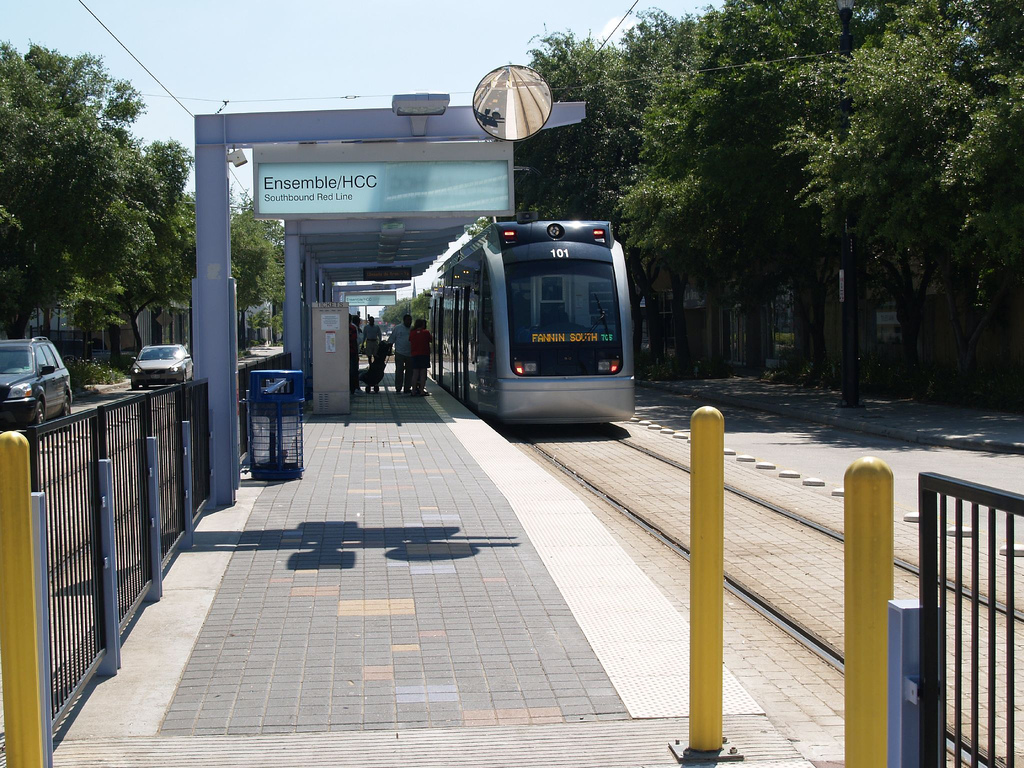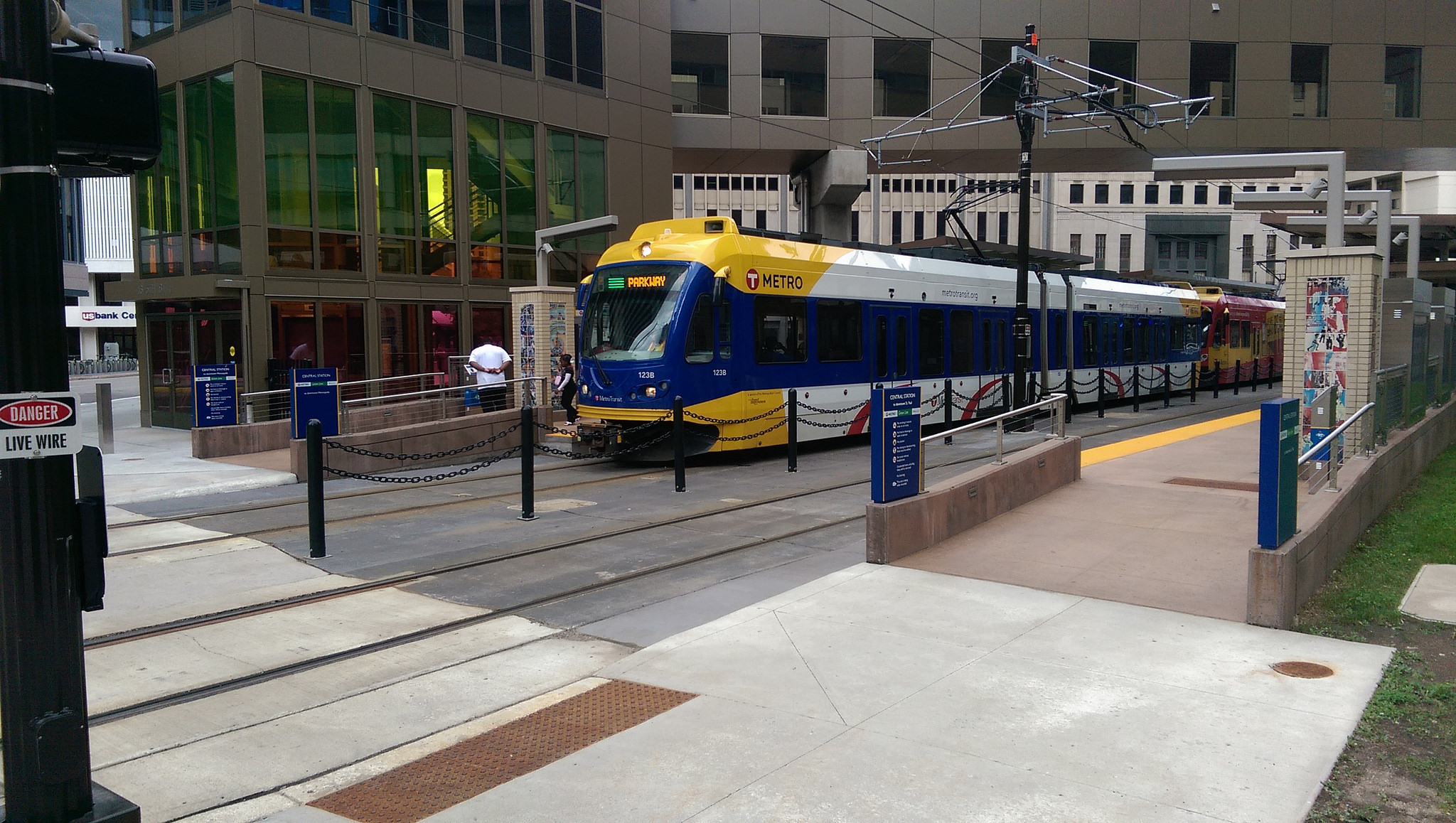Houston doesn’t have much of a reputation for public transit, although about 300,000 rides are taken on trains and buses in the region every weekday. Recently, though, the local transit agency, Metro, has been making some big moves.
First, the agency worked with transit consultant Jarrett Walker and a local team led by TEI to completely reimagine its bus network. Rather than a predominantly radial system, where most routes headed towards downtown, the new network relies on a grid of bus lines that come frequently enough for people to use for transfers. As a result, the bus system now helps people reach more varied destinations all over the metro area, not just those downtown—which is crucial in a region as decentralized as Houston’s. It also recognizes that in many cases, a smaller number of more frequent, show-up-and-go lines is superior to a larger number of routes that show up only once an hour, or not at all at off-peak times. Notably, the reorganization, which took effect in August, was designed to be budget-neutral.


Second, in May, Metro opened two new light rail services: the Green and Purple lines. Together, they run for almost 10 miles south and west of downtown, built at a cost of about $1.4 billion over six years. The rail lines are supposed to improve reliability and comfort over the older bus service, and catalyze economic redevelopment in the neighborhoods through which they pass.

How have Houstonians reacted to these projects?
Though bus ridership dipped briefly after the reorganization as riders learned their way around, by November, ridership had not only regained its previous levels but exceeded them by four percent. Walker, the consultant largely responsible for the redesign, estimates that ridership might increase by as much as 20 percent over two years. It’s obviously unclear whether that will happen, but a four percent jump over just two months is a pretty good start.
The Green and Purple lines, in contrast, are off to a slow start. In November, the most recent data available, they were averaging fewer than 7,000 rides per weekday combined. By contrast, the city’s first light rail line, the Red Line, carried almost 55,000 rides.
In fact, it turns out that the total monthly ridership of the Green and Purple lines combined is less than the growth in bus rides since the implementation of the new service pattern: about 185,000 rides on the light rail lines in November, compared with an increase of 199,000 rides on the bus network.
That’s pretty incredible, considering that the former cost $1.4 billion to plan and build over the better part of a decade, and the latter was designed and implemented in just a year for a tiny fraction of the cost—and is budget-neutral going forward, as opposed to the added operations cost of running the light rail lines.
It would be easy to take too much from this. In many cases, new light rail lines have in fact attracted significant ridership: Houston’s own Red Line, for example, or the Green Line in Minneapolis-St. Paul, which opened in 2014 and is already beating forecasts with over 40,000 rides a day. Where already high-ridership bus lines need added capacity or cities are looking to dramatically add density to the urban fabric, requiring high-capacity transit service, rail can and does play an essential role.

But as Jarrett Walker has argued, the real issue with transit is less about mode—bus or rail or ferry or helicopter—and more about service. Does the vehicle, whatever it is, come frequently and reliably so that you can show up to a stop and be sure you’ll be able to board soon? And does it actually provide a way to get to your destination in a reasonable amount of time? If yes, people will ride, whether the wheels are rubber or steel. If no, they won’t.
Nor is Houston’s experience exceptional. Last year, we found a national trend of better bus ridership where local transit agencies were improving service—and declines where service was deteriorating.
Ironically, in its article about the opening of the Green and Purple lines, the Houston Chronicle quoted a man who was excited about the trains because, he said, “You can’t trust the bus.” But it turns out that’s not a permanent condition. If you make the bus more trustworthy, riders will come. Resource-starved cities looking for ways to improve their bread-and-butter transit services, connecting residents to the people, jobs, and amenities they need, would do well to look at what’s happened in Houston.
